Are you a pet lover with a passion for writing? Do you want to make money online while sharing your knowledge and experiences with other pet owners?
If yes, starting a pet blog is a great way to turn your love of animals into a profitable venture.
In this post, I will show you how to start a pet blog and make money online. By the end of this guide, you will be able to build and run a successful pet blog from scratch.
If you have any questions along the way, just drop a comment and I will help you out.
So let’s get started!
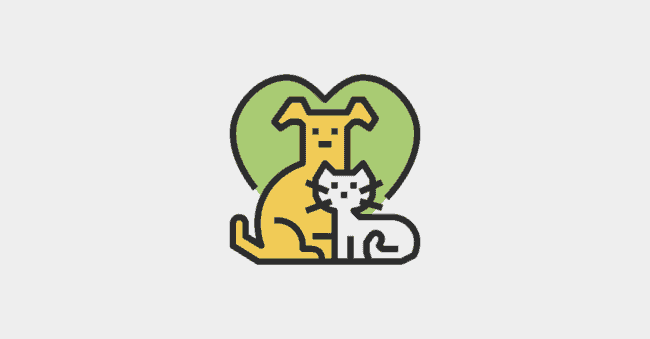
How to Start a Pet Blog in 7 Steps
- Define Your Pet Blogging Goals
- Choose a Pet Niche
- Pick & Register a Blog Domain Name
- Setup WordPress
- Write & Publish Blog Posts
- Promote Your Pet Blog
- Monetize & Make Money
1. Define Your Pet Blogging Goals
The first step to starting a successful blog is defining your goals.
To start, think about what you hope to achieve with your pet blog. Do you want to build an audience and connect with other pet owners? Do you want to make money through advertising or affiliate marketing? Or do you simply want to share your love of pets with the world?
Once you have a clear idea of your goals, it will be easier to create content that resonates with your target audience.
What is a Pet Blog?
A pet blog is a website or blog that focuses on topics related to pets, such as animal care, pet health, pet food, and pet training. Pet blogs can be created by individual pet owners or businesses that offer products and services for pets.
Why Start a Pet Blog?
There are many reasons to start a blog. Some of the many benefits include:
- Connecting with other pet owners and building an audience
- Sharing your knowledge and experiences with others
- Making money through advertising or affiliate marketing
- Promoting products and services for pets
- Become an expert or influencer in a particular pet niche
How much money can you make from pet blogging?
You can make $15-$25 for every 1000 ad views on your pet blog. An SEO optimized blog post can get anywhere between 300 to 1000 visits per month. So, a pet blog with 100 blog posts can make as high as $2500 every month. You can make even more money if you monetize with affiliate marketing and digital products.
2. Choose a Pet Niche
Once you have a clear idea of your goals for your pet blog, it is time to choose a niche.
A niche is a specific topic or area of interest within a larger category. For example, you might focus on pet health and wellness, dog training, cat food reviews, or outdoor adventures with pets.
Why choose a niche?
There are several reasons why it is important to choose a niche for your pet blog:
- A niche allows you to focus your content and connect with a specific group of people.
- It makes it easier to stand out in a crowded market and be seen as an expert in your field.
- People are more likely to subscribe to and follow a pet blog that covers a specific topic that they are interested in.
- A niche allows you to monetize your blog more easily through digital products because it is extremely focused.
Finding Your Ideal Niche
When choosing a pet niche, it is important to pick one that interests you or that you are passionate about. This will help make your job as an author or blogger more enjoyable and prevent burnout.
Also, consider how much time and effort you are willing to put into your blog. If you want to become an expert in a particular field, you will need to invest time and energy into research and writing quality content.
Here are some questions to ask yourself when choosing a niche:
- What topics related to pets do you enjoy discussing?
- What do you have expertise in?
- What problems do you want to solve?
- What needs are not being met in the pet industry?
- What are people searching for online?
- What trends are popular right now?
Here are a few pet niches to help you find yours:
- Specific Dog Breeds
- Dog Food
- Dog Training
- Dog Houses
- Breeding Dogs
- Dog Toys
- Cat Food
- Cat Training
- Bird Training
- Bird House
- Aquarium
- Aquatics
- Beekeeping
- Rabbits
Come up with a few niche ideas.
Examples of Pet Blogs
Sometimes looking at other pet blogs will help inspire ideas of your own. Here are some of the more popular examples of the best pet blogs:
[auto-list-number] Dog Tipper
This is a blog by Paris and John that focuses on dogs. It has tips, recipes, and reviews of top products for dogs. This blog makes money through both ads and affiliate marketing.
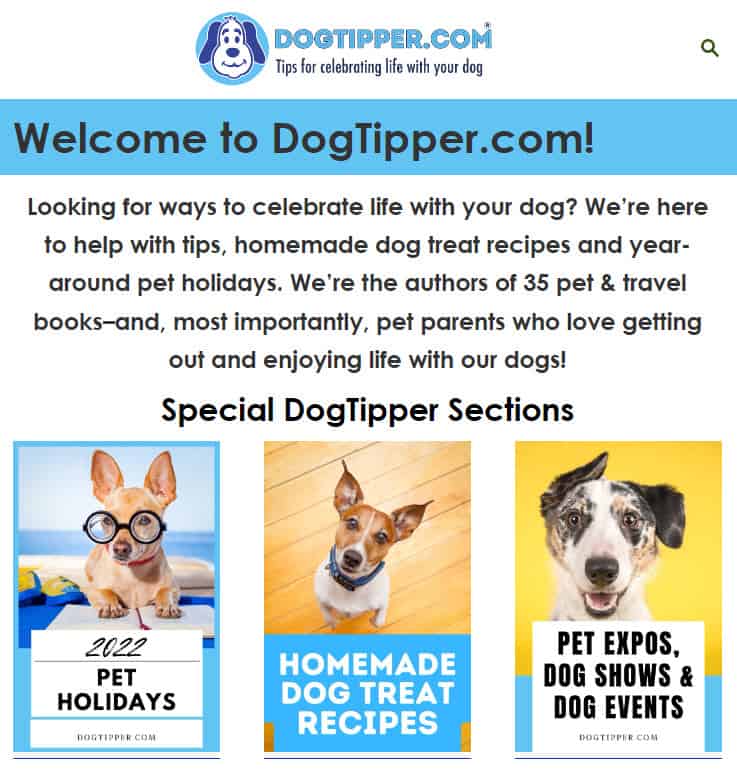
[auto-list-number] Aquarium Source
Aquarium Source is a blog for aquarists and has guide care for different breeds of fish and reviews for different aquarium products like heaters, tanks, skimmers, and filters.

[auto-list-number] Fresh Pet
The blog focuses on giving pets a healthy lifestyle. This blog caters to both cats and dogs.
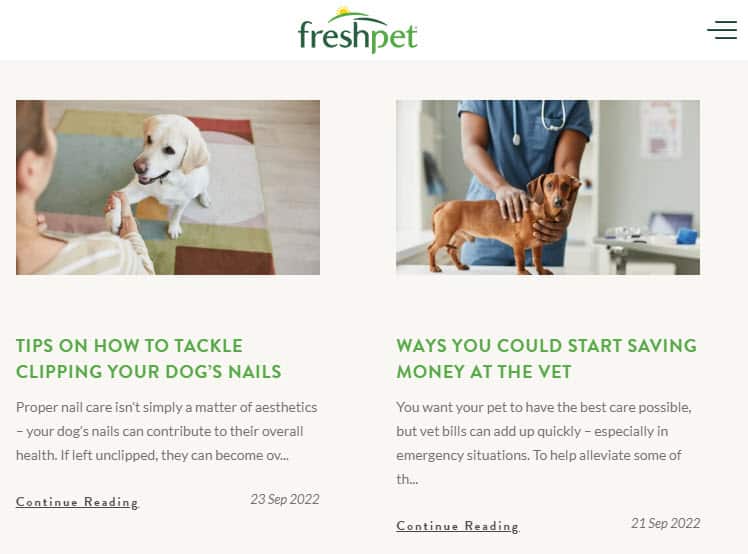
[auto-list-number] Here Bird
This is a blog focused on birds and covers all topics to care for birds and reviews cages, health, food, and training.
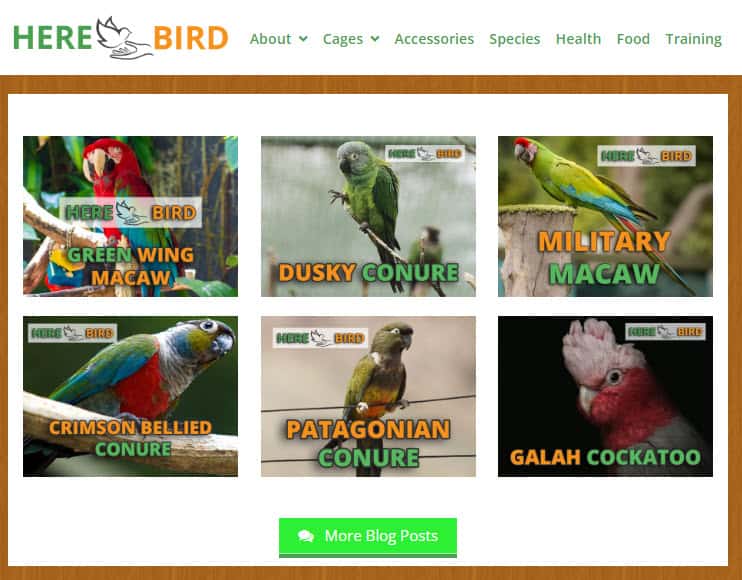
[auto-list-number] All Things Rabbit
This blog covers everything you need to know about rabbits. This includes how to care for them, what food to give them, how to build a rabbit hutch, and toys for rabbits.
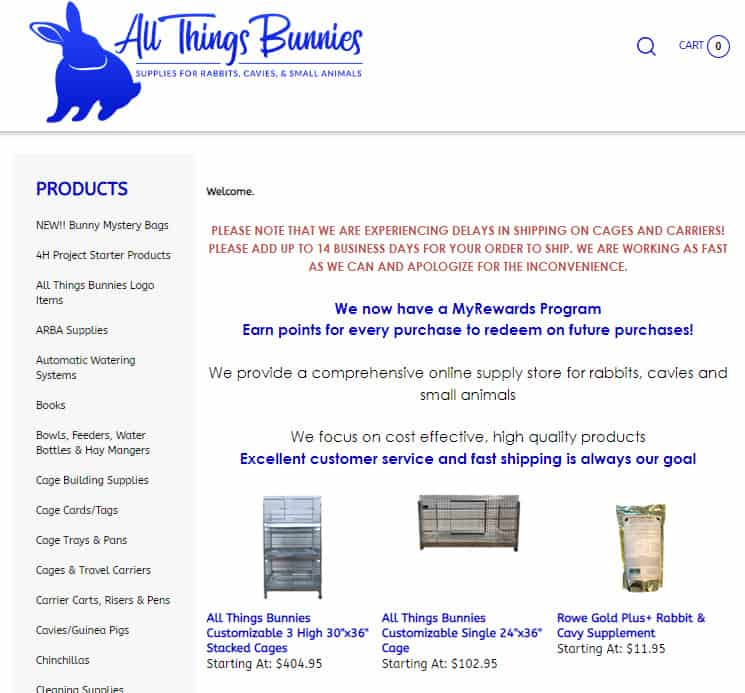
3. Pick & Register a Blog Domain Name
Once you have chosen your niche, it is time to brainstorm a few names for your new pet blog.
We recommend you keep your pet blog name to two words (Example: Dog Tipper). One of the two words should be a keyword from your niche which is probably the type of pet your blog focuses on. The other word can be something that makes your website brandable. For example, our blog teaches people how to make passive income, so we have named it Passive Book.
Use a Business Name Generator to brainstorm the name of your blog.
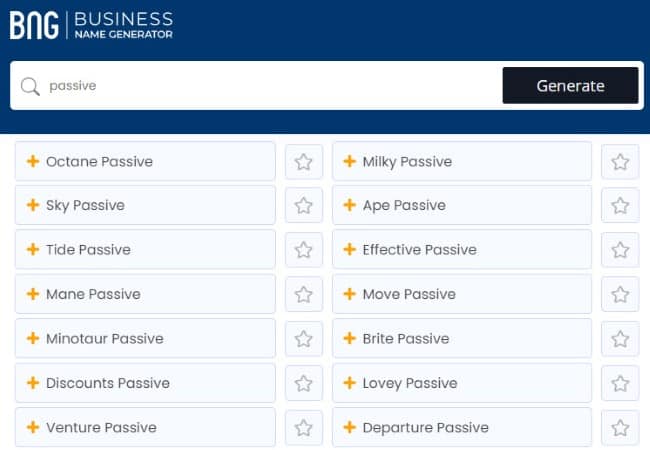
You can also use your own name for your blog. But if you ever plan to sell your website in the future, it is much more difficult to transfer your brand to the buyer when it is your name.
Check Domain Name Availability
After you have brainstormed a few names for your pet blog, you should check if the .com domain name is available.
A domain name is the web address that people type into their browsers to visit your pet blog. It is usually your pet blog’s name followed by .com.
You must check if both the .com domain name and the social media handles are available. You can use Namechk to check the availability of both your domain name and social media handles.
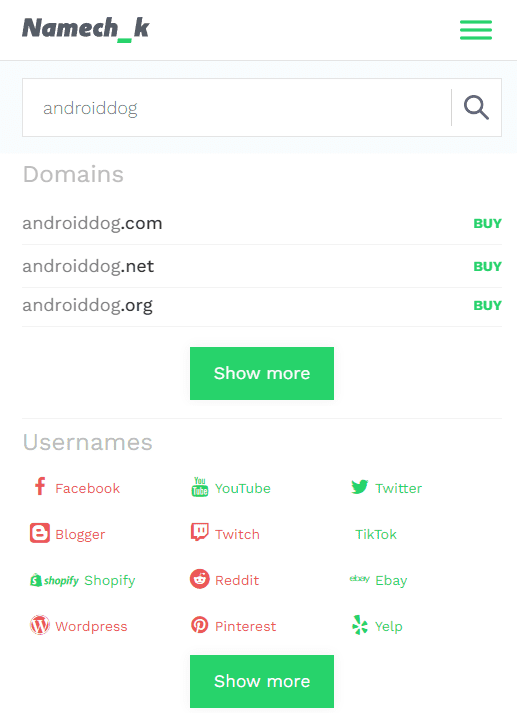
Here are a few things to keep in mind when selecting a domain name:
- Choose a .com domain name. 86% of the internet uses .com, so your visitors are likely to try visiting your blog by typing .com. Avoid other extensions like .net or .org.
- Don’t include hyphens and numbers.
- Do not use words with multiple spellings (for example colour vs color).
- Shorter domain names are better. Try to keep it under 12 characters.
- Spelling & Pronunciation should be easy and intuitive.
- It should be easy to remember.
- Avoid words that can be misread together. For example, therapistjohn.com can be read as Therapist John or The Rapist John.
- Make sure it’s not trademarked or copyrighted by someone else. The AI writing software Jarvis.ai had to rebrand to Jasper.ai because Marvel sued them for the Iron Man reference. Lawsuits will happen once your blog is established.
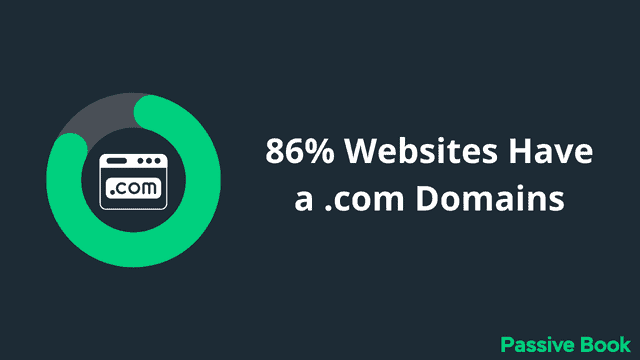
Register a Domain Name
Once you decide your domain name it is time to register it.
You should register your domain with NameCheap because you will get domain privacy for free. Other providers charge $12 per year for domain privacy. Without domain privacy, your name, home & email address will be accessible to the public.
Step 1: Go to NameCheap. Enter your domain name with the .com extension.
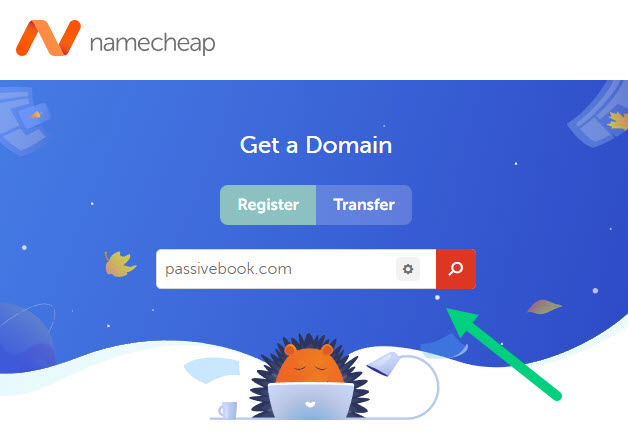
Step 2: Select the .com extension and click the Add to Cart button.
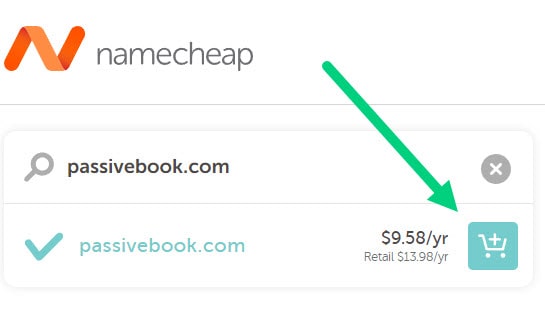
Step 3: After adding the domain to the cart, click on the Checkout button.
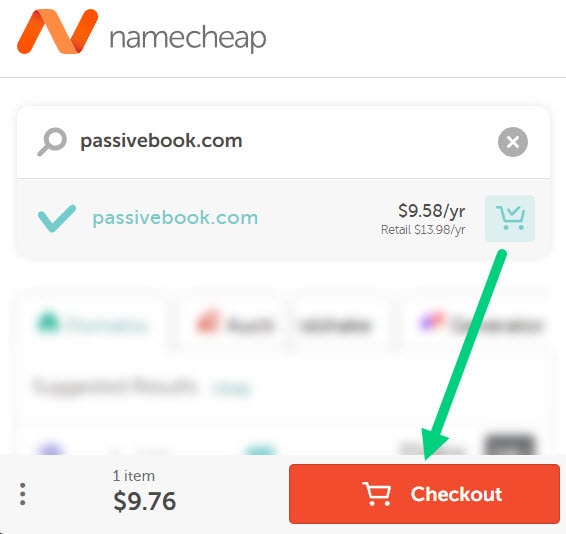
Step 4: Enable Domain Privacy that comes for free along with auto-renew. You don’t need any other paid addon.
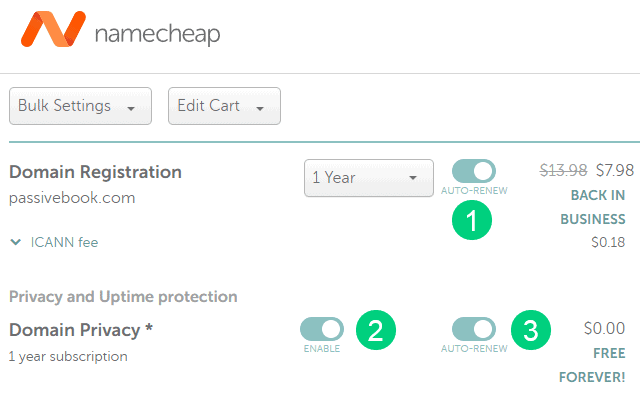
Step 5: Click on Confirm Order. Pay to complete your purchase.

Step 6: Log in to Namecheap and click on Domain List ❶ in the left sidebar and then click Manage ❷ next to the domain you just purchased.
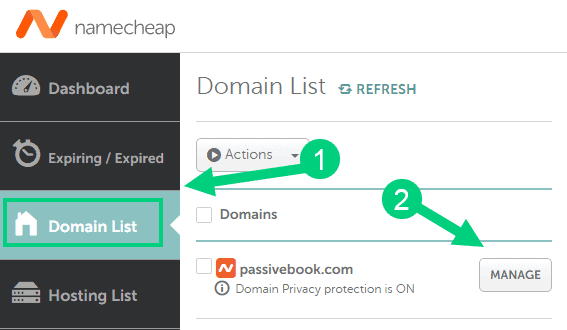
Step 7: Under the Nameservers section, select “Custom DNS” from the dropdown ❶. Then enter the following two nameservers ❷ ns1.bluehost.com and ns2.bluehost.com as shown in the image. Then click the green tick ❸ to save. If you use a hosting provider other than Bluehost, enter their nameserver values in this step instead.
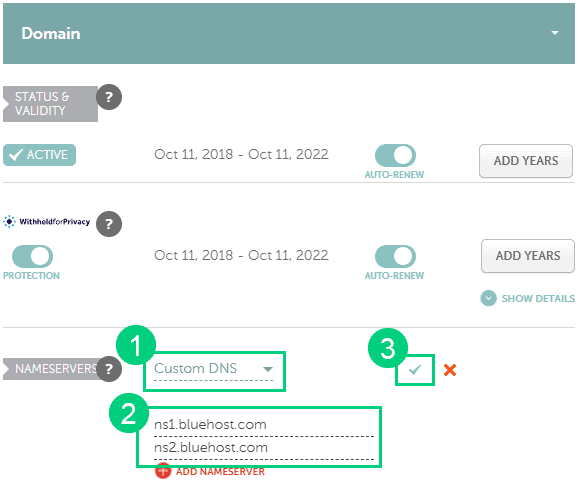
Can I get a free domain name?
Your web hosting provider might give you a free domain name for one year but they charge $12 for domain privacy which is free in Namecheap. From the second year, you will pay for both the domain and privacy which will cost you more than $20+. So it is cheaper to just register your domain with Namecheap from the beginning. Also using different companies for web hosting and domain registration will allow you to easily switch your blog host later without transferring domains.
Can I change the name of my blog later?
You will lose your search engine rankings if you change your blog’s name once it gets links from other websites. It will take as long as a year or more for you to regain the lost traffic. It is possible to mitigate problems by having proper redirects. But you will have to renew both your old and new domains every year. So try to avoid changing your blog’s name once it is established.
4. Setup WordPress
The next step is to get your blog up and running in WordPress.
WordPress is a popular blogging platform and content management system that is free to use. It offers a wide range of features that makes it extremely easy to create a blog.
Why Choose WordPress.org?
There are many blogging platforms but the self-hosted wordpress.org powers 70% of blogs on the internet. 42% of all websites on the internet use WordPress.

Here are a few reasons why you should consider using WordPress:
Easy to use and manage – WordPress is highly user-friendly, making it easy for anyone to create and manage their blog. You can customize your blog’s appearance, content layout, and other features with just a few clicks of the mouse.
Community support & themes – There is an active WordPress community that creates themes and plugins (add-ons) to make your blog look great and function better.
Flexibility – You can use WordPress to create any kind of website, from a simple blog to a complex eCommerce website.
Good for SEO – WordPress is written using clean code and standard compliance, which makes it easy for search engines like Google to index your site.
WordPress.org vs WordPress.com
There are two WordPress platforms that you can use: WordPress.com and WordPress.org.
WordPress.com is a platform provided by Automattic, the company behind WordPress. It is a paid platform where you can create a blog for free. But if you want to use your own domain name or add custom plugins, you will need to upgrade to their expensive paid plan. You cannot monetize your blog in their free plan.
Wordpress.org, on the other hand, is free and open-source software that you can download and install on your own web hosting account. This is what we recommend if you want to start a blog. You have full control of your blog and can customize it however you want.
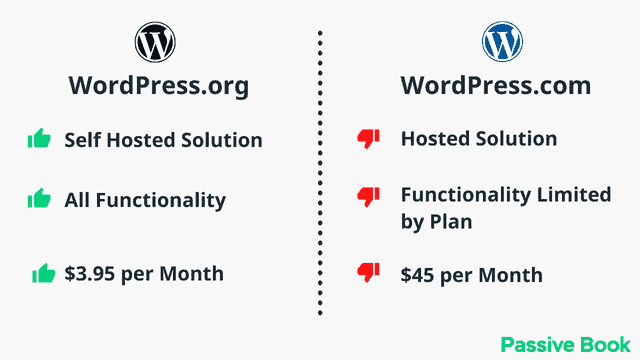
Why Avoid Free Blogging Platforms
While there are many free blogging platforms like Blogger, Tumblr, and Wix, we generally do not recommend them because you will have limited customization options and your blog will be hosted on their domain.
You won’t own the content you create and your ability to drive traffic and monetize your blog will be severely restricted. There are countless horror stories of Blogger and Tumblr deleting blogs overnight without any notice. You will also have no way to recover it.

For all these reasons we recommend you start your blog in self-hosted WordPress.
How much does it cost to start a pet blog?
It will cost you $2.95 per month to host your WordPress pet blog in Bluehost. A domain will cost you $12/year. So that is a total of $4.2 per month, which is less than the price of Netflix for all the unlimited features that a self-hosted WordPress blog has to offer.
What to do if you already have a free blog?
If you are currently using a free blogging platform like Blogger or Tumblr, it is very easy to migrate to WordPress. All you need is the free WordPress Import plugin and it will automatically copy all your posts, comments and images from your old blog to your new WordPress blog. It also keeps all your permalinks and SEO rankings intact.
Install WordPress in Hosting
WordPress is a popular content management system (CMS) that requires a web hosting account to be installed.
A web host is a server that stores your blog post, files, and images. When someone visits your blog in a browser, your web host will load the files from your server into your visitor’s browser.
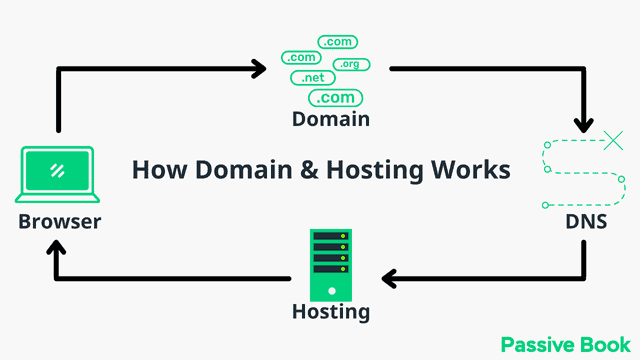
For this guide, we will use BlueHost as our web host. It is a cheap hosting that is extremely easy for beginners to set up. If you use any other web host, the steps will be the same but the user interface may be slightly different.
1. Go to BlueHost using this link to get a special discount. Select WordPress > WordPress Hosting from the top menu.
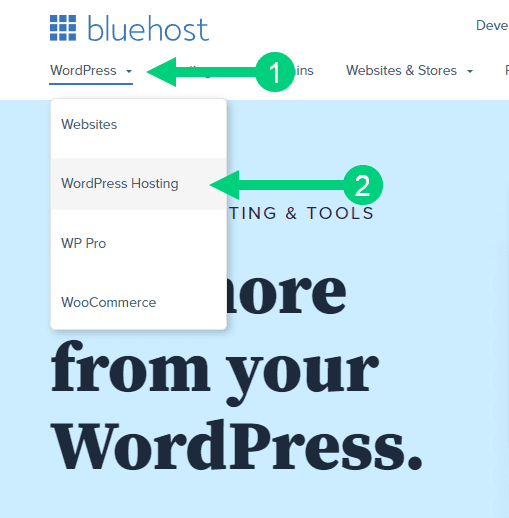
2. Click on the button you see on this page and you will be taken to the pricing section.
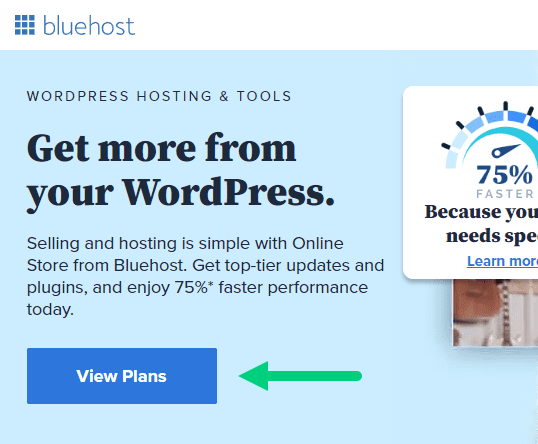
3. Select the Basic Plan. You can upgrade to a different hosting plan as you grow.

4. If you already have a domain name that you purchased with Namecheap you can put that in the “Use a domain you own” ❶ section. If you don’t have a domain name yet, choose the “Create a New Domain” ❷ to purchase a new domain.
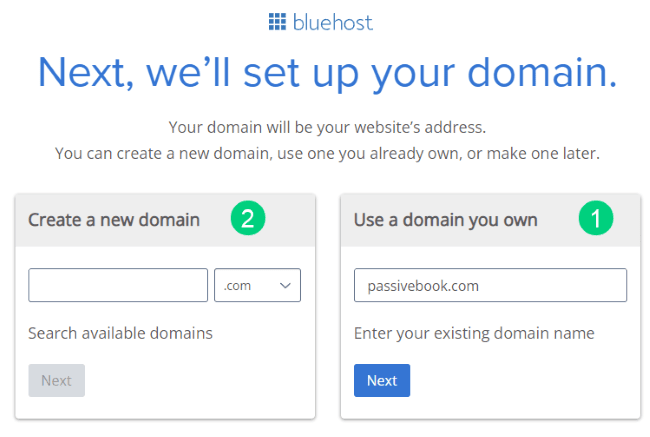
5. In the next screen, enter your information. Uncheck all package extras. If you purchase your domain through Bluehost instead of Namecheap, you may want to enable Domain Privacy. You won’t see the Domain Privacy option if you bought your domain through Namecheap. Namecheap will give you this Domain Privacy for free.
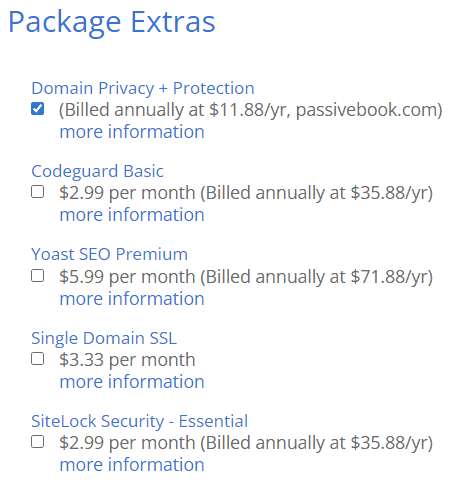
6. Once you have successfully paid, you will be prompted to set a password. Click on the “Create your Password” button.
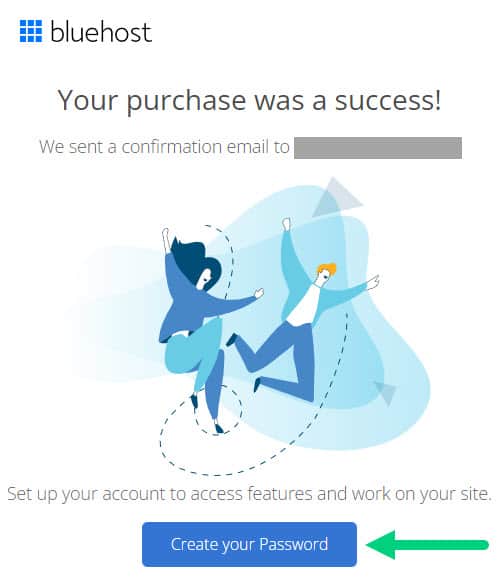
7. Enter your password and create your account. If you lose this password, you can reset it.
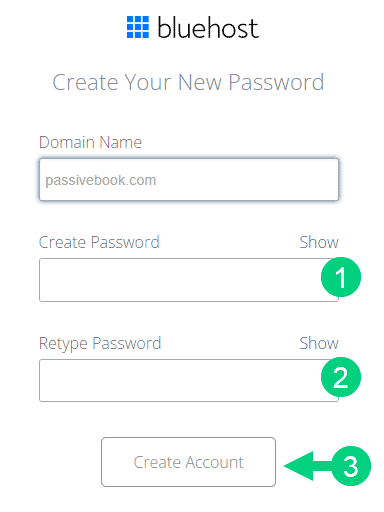
8. After you set your password, log in to Bluehost.
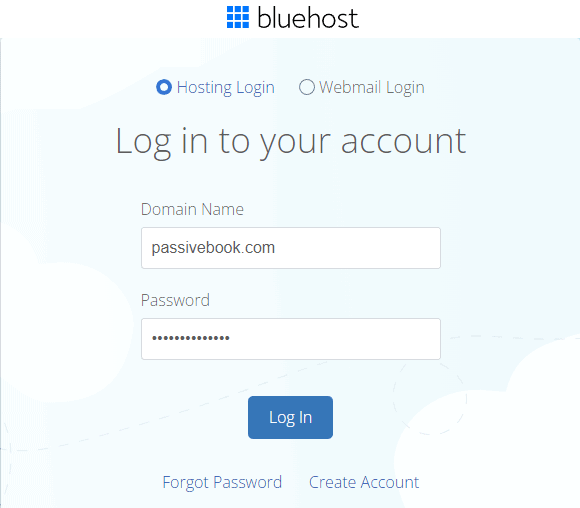
9. Click on the Create your website button on the following screen. This will start a Bluehost Wizard, just click Skip this step wherever possible.

10. On the following page, click “No help needed” or “Skip this step”. We don’t want Bluehost to limit our customization options.
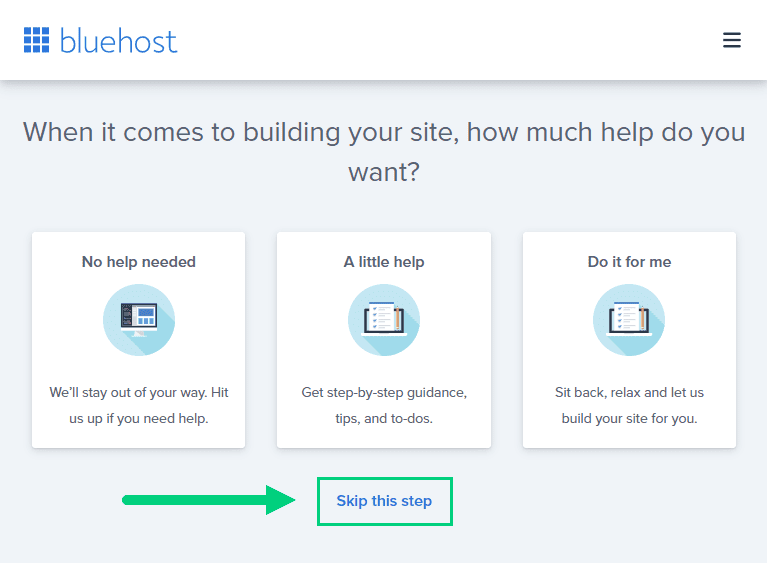
11. On the next page, you will be asked about the purpose of your website. You can choose from any of the available options.
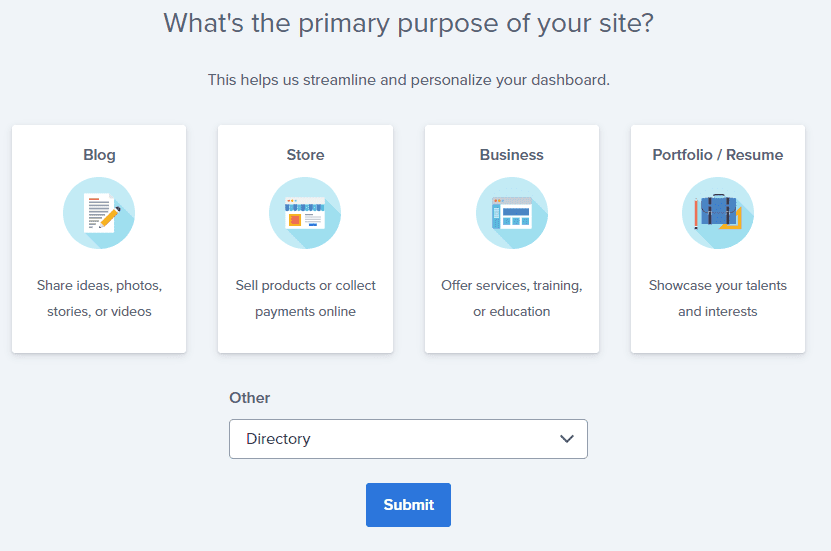
12. On the next page, click Skip this step.
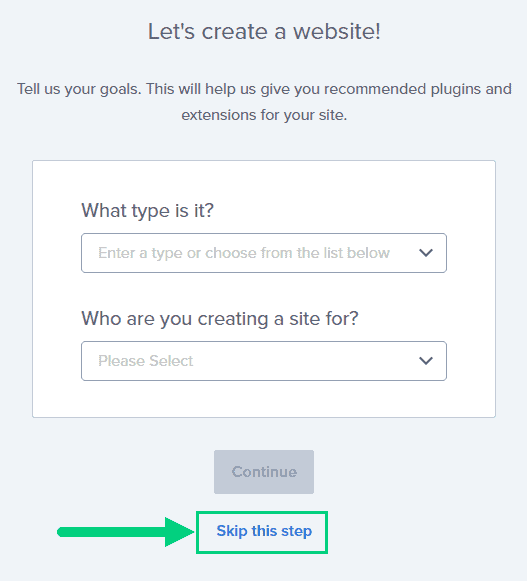
13. On the following page, enter the blog’s name and tagline. You can change this later so feel free to click “Skip this step” or enter something as a placeholder and click Continue.
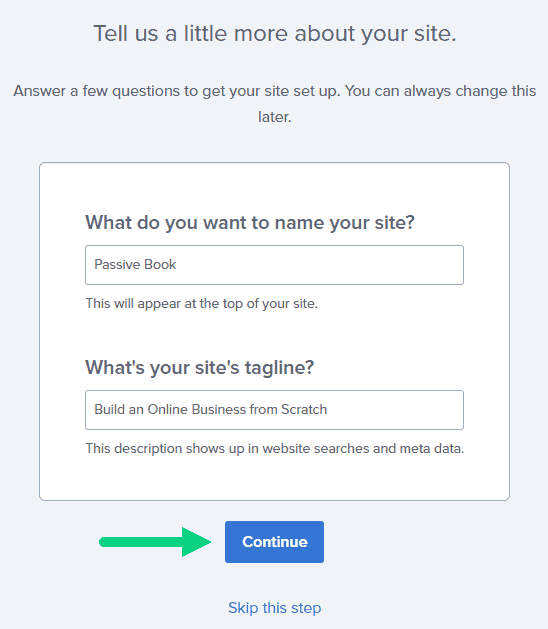
14. Finally you will be asked how you want to build your website. Choose “Limitless customization” to have all the options.

15. You can see your blog by going to yourdomain.com. Go to the Bluehost dashboard and click on the My Sites tab ❶ in the left sidebar and click on the “Manage site” button ❷.
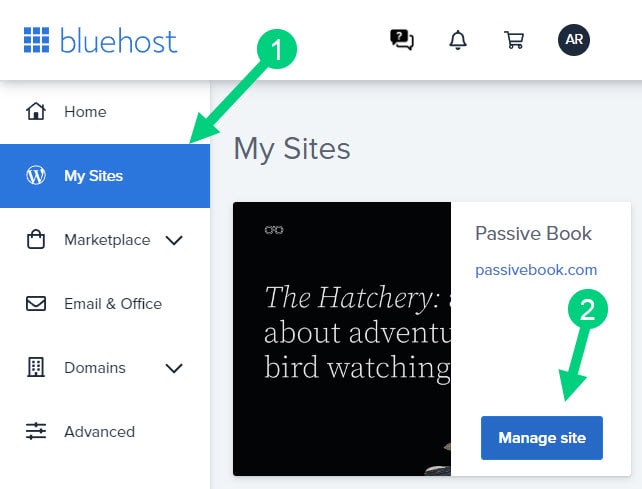
16. Your WordPress site has separate login credentials different from the ones you use to log into Bluehost. You can use this to log in to the WordPress dashboard directly without logging into Bluehost. To get this:
❶ Click on Users on top.
❷ You will be able to see your username and email that you can use to log in to WordPress.
❸ If you click on the three dots you will see the option to Reset your password. ❹
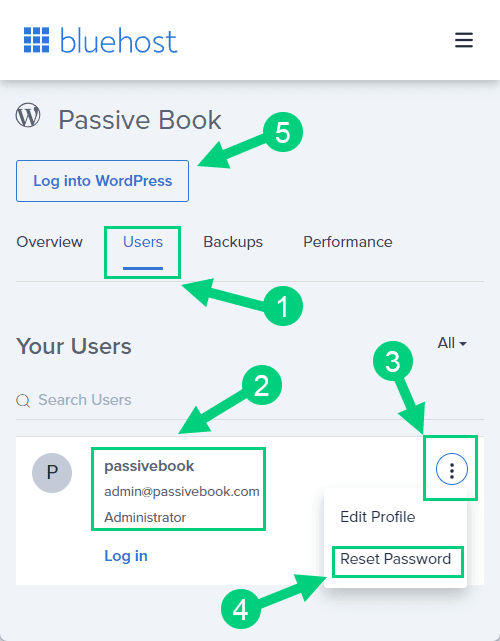
You can log into WordPress from the Bluehost dashboard by clicking the Log in to WordPress button ❺. But it is not recommended you rely on this as your primary login method because you will get locked out of your site if you ever change hosting providers.
17. You will be taken to the WordPress dashboard where you can reset your password ❶. If you don’t like the username Bluehost created for you, you can Add a New User ❷.

18. If you are adding a new user make sure you specify the user role as Administrator ❶. You can log in as the new user and safely delete the default user created by Bluehost.
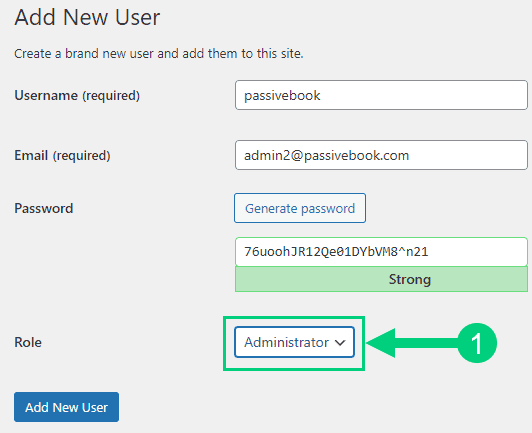
Congratulations! You have successfully set up WordPress.
Configure WordPress
Now that you have the basic version of WordPress installed, it is time to customize it to make it look and feel the way you want.
Login to WordPress Dashboard
The WordPress Dashboard is the main area where you will manage your blog. From the Dashboard, you can add new posts and pages, change your blog settings, install plugins and themes, and more.
Visit yourdomain.com/wp-admin to access the WordPress dashboard.
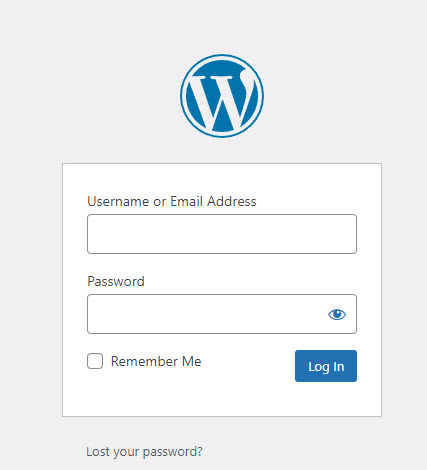
Use the Email and Password you provided during installation to log in to your WordPress dashboard. If you don’t have a password, use the “Lost your password?” link to generate a new password.
Install WP Themes
A WordPress Theme is a collection of files that determine the look and feel of your WordPress blog. It can be used to change the entire design of your blog or just to change the appearance of certain elements like the header, sidebar, or footer.
Your new WordPress blog will be installed with a default blog theme that doesn’t look very great.
To install a new WordPress Theme:
Go to Appearance > Themes > Add New in your WordPress dashboard.
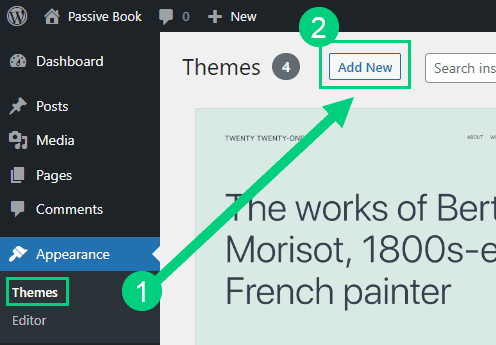
Use the search to find a theme that you like ❶. Before you install the theme, you can see a demo of the theme and learn about its features from the preview screen ❷. If you like the theme, you can install it by clicking the install button ❸. You can also upload a theme from a file on your computer ❹.
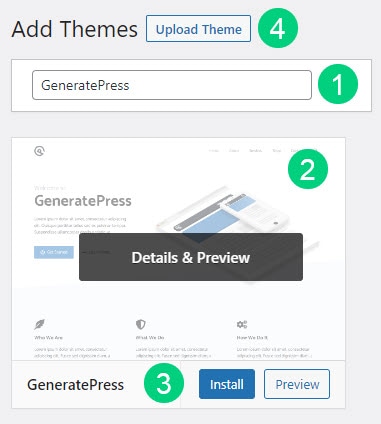
Once installed, click the Activate button to enable the theme.
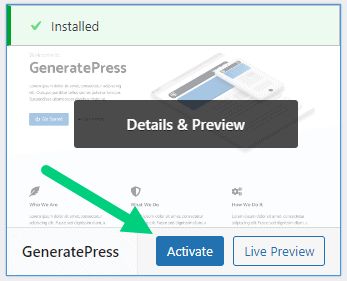
Although you can use a free theme (there are thousands of free themes available), we recommend using a premium theme.
Premium themes not only reduce your website’s load time but also help you customize your website to your heart’s desire.
Here are the premium themes we recommend:
There are also several custom-made pet blog themes. These themes tend to be bloated with poor code which will slow down the performance of your website. We suggest getting one of our recommended themes for a fast website with unlimited customization possibilities.
Install WP Plugins
WordPress plugins are small pieces of software that add new features or functionality to WordPress. They can be used to change how your blog looks or works or add new features like contact forms, social media buttons, and more.
Too many wordpress plugins can slow down your blog site. So before you install new plugins, it will be worth clearing out any existing plugins that your hosting provider installed by default.
Plugins first need to be deactivated before they can be deleted.
❶ Go to WP Admin > Plugins > Installed Plugins
❷ Click on the checkbox to select all plugins.
❸ Select Deactivate from the drop-down.
❹ Click Apply.
❺ Repeat the above steps but select “Delete” instead of “Deactivate” from the dropdown in ❸ to delete all the deactivated plugins.
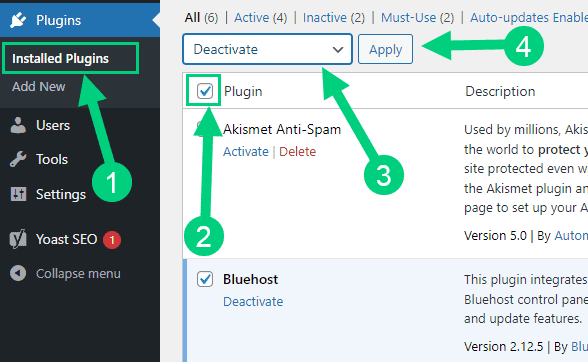
To install new plugins go to the WP Admin > Plugins > Add New.
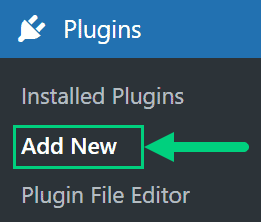
On the plugins page:
❶ Search for the plugin you want in the search bar
❷ Click Install Now. Once you install the plugin, you must also activate the plugin for it to be enabled.
❸ If you are installing a paid plugin you can upload the plugin instead.
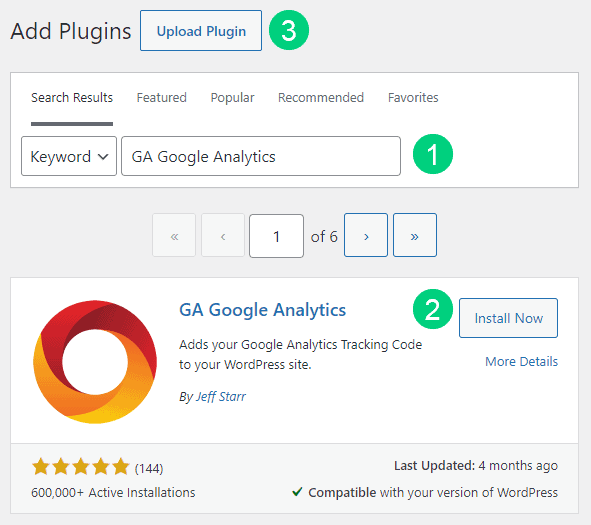
There are many different pet blog plugins that you can install, but here are the ones which we recommend:
Backup Plugin: A WordPress Backup plugin creates backups of your website so you can restore it if something goes wrong.
Recommended Plugin: WPVivid (paid) or UpdraftPlus (free).
SEO Plugin: A WordPress SEO plugin improves the visibility of your website in search engines. It does this by adding features like XML sitemaps, metadata, and more.
Recommended Plugin: RankMath (paid).
Google Analytics Plugin: A WordPress Google Analytics plugin allows you to collect information about how your website is being used, including how many visitors your website is getting and what pages they are visiting.
Recommended Plugin: RankMath (paid) or GA Google Analytics (free).
Cache Plugin: A WordPress Cache plugin stores a copy of your website’s pages and posts in a cache (a temporary storage area). This makes your website load faster because the pages don’t have to be generated each time someone visits them.
Recommended Plugin: WP Rocket (paid).
Page Builder Plugin: A WordPress Page Builder plugin allows you to create custom pages and posts by dragging and dropping different elements into a WYSIWYG (What You See Is What You Get) editor.
Recommended Plugin: Thrive Architect (paid).
Security Plugin: A WordPress Security plugin helps secure your WordPress website by adding features like malware scanning, two-factor authentication, and more.
Recommended Plugin: Wordfence (free).
Social Media Plugin: A WordPress Social Share plugin allows you to share your website’s content on social media networks like Facebook, Twitter, and LinkedIn.
Recommended Plugin: Easy Social Share Buttons (paid).
Email List & Lead Generation Plugin: A WordPress Email Opt-in Form plugin allows you to collect email addresses from people who visit your website. This allows you to build an email list so you can send them updates about your blog.
Recommended Plugin: Thrive Leads (paid).
Customize WordPress
Once you have installed your theme and plugins, it is time to customize the wordpress blog platform:
Change Colors, Fonts & Spacing
You can set the font, colors, and spacing by going to Appearance > Customize in your WordPress dashboard. Premium themes like GeneratePress allow you to customize every aspect of your blog.

Check out our Blog Fonts & Typography guide to choose the right font and typography settings for your blog.
Add Your Logo
Get a logo designed for your blog from Fiverr. Then set the logo of your blog by going to Appearance > Customize in your WordPress dashboard. A logo is not required for a successful blog but it can definitely help appeal to your target audience.
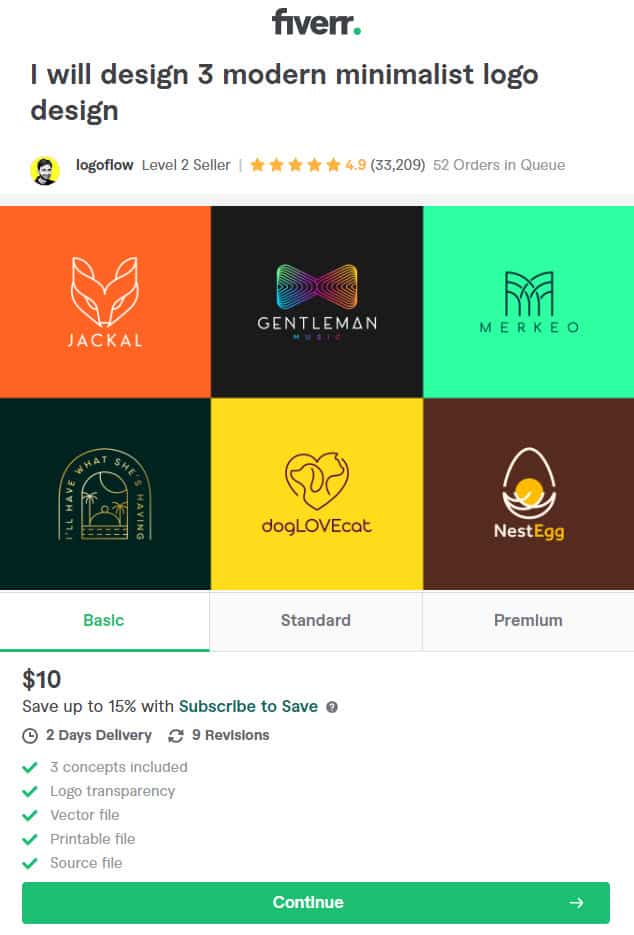
Change Favicon
Favicon is the image that appears in the browser tab and bookmarks. Set the Favicon from the Appearance > Customize section of the WordPress dashboard.

Create Menus
The header and the footer menu can be set from the Appearance > Menus in your WordPress blog dashboard.
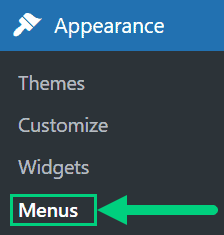
You can nest menu items so that it appears as a dropdown menu ❶. You can use the menu as your primary or secondary navigation menu ❷. Don’t forget to save your menu ❸.
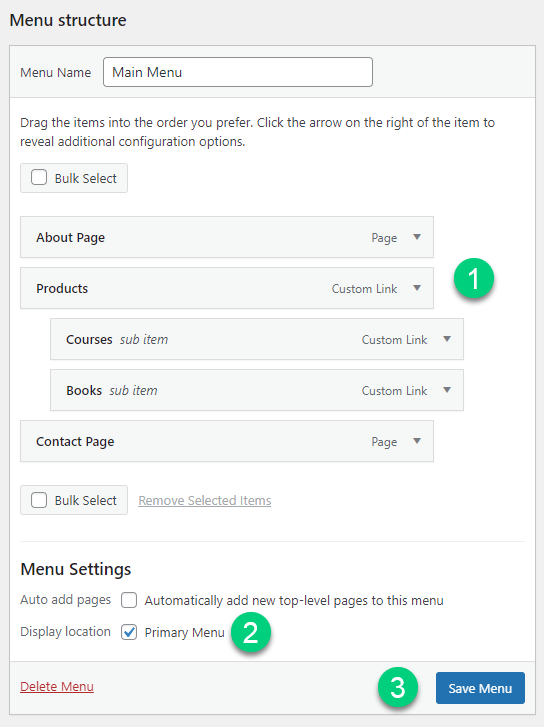
Create Widgets
If you have a sidebar, you can add widgets to it. Go to Appearance > Widgets in your WordPress admin dashboard.
Check out the list of the most useful Blog Widgets and how to add them to your blog.

Set Title & Tag Line
The next step is to change your General Settings. Go to Settings > General in the WordPress Admin area.
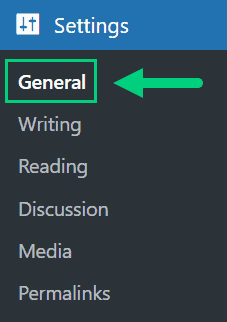
You can set your Site Title, Tagline, and Time Zone from this screen.
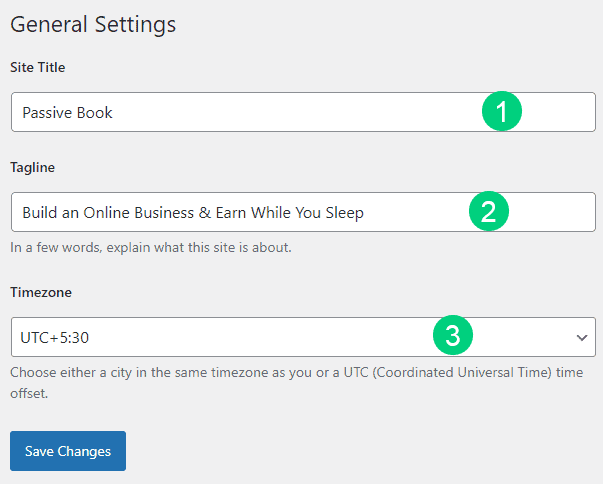
Set Permalinks
The ideal URL structure for SEO is yourdomain.com/sample-post. Set your permalink structure by going to Settings > Permalinks in your WordPress blog dashboard.

Select the “Post name” radio button and save changes.
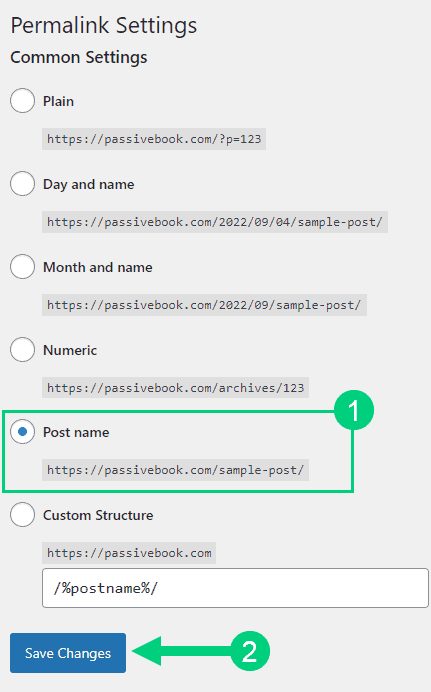
Enable Search Visibility
Chances are you want your blog to show up on Google so people can find you. Go to Settings > Reading in your WordPress dashboard.
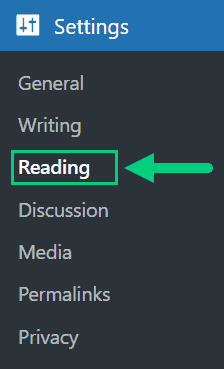
To get search engine traffic, ensure the checkbox “Disable search engines from indexing this site” is Unchecked. You can find this option in Settings > Reading. Most of the time this should be unchecked by default but if it is not, then uncheck it to ensure your site gets traffic from search engines.
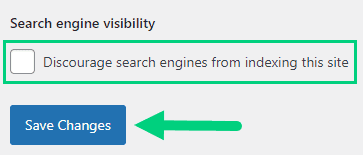
Adjust Comment Settings
Next, you will want to change the Discussion Setting (aka Comments). Go to Settings > Discussion in your WordPress admin area.
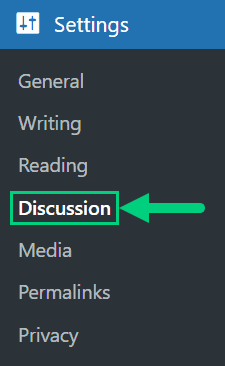
❶ You may want to enable or disable comments on this page. You can also disable pingbacks and enable comment moderation.
❷ You can also set comment approval settings.
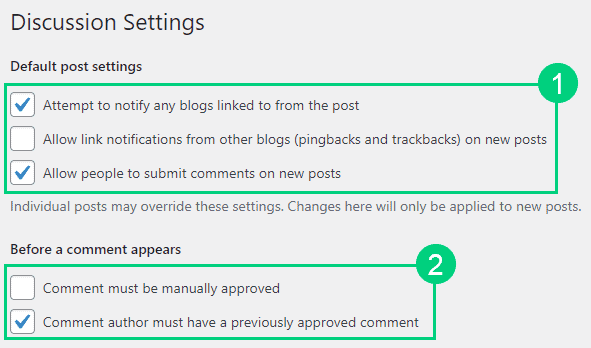
If you want to design your blog further, check out our dedicated guide on blog design which has all our best blog design recommendations.
Create Static Pages
There are a few essential pages that you need to create for your pet blog before you can start blogging.
Use pages in WordPress to add static content. Go to WP Dashboard > Pages > Add New.
- Write the headline of your content.
- Populate the body content
- Click the publish button.
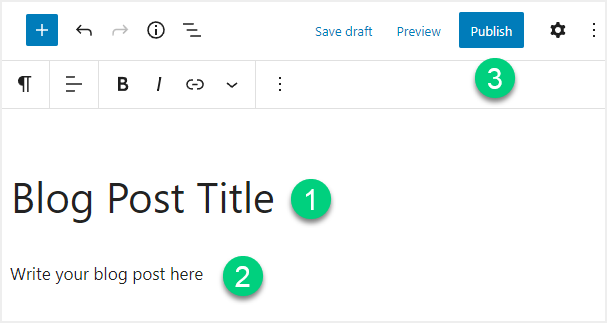
You may want to create the following pages:
Home Page
A home page is the main page of your website. It is the page that your visitors see when they first visit your website. Most WordPress websites have a home page that displays recent blog posts, a welcome message, and a few other widgets or elements.
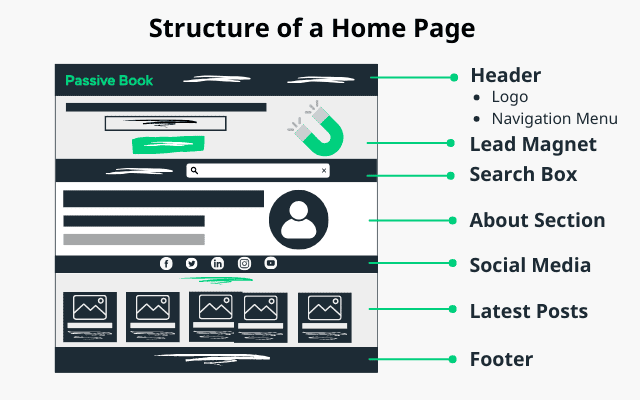
You can create a professional home page for your pet blog using a page builder like Thrive Architect.
About Page
An About page is a page where you introduce yourself to your visitors and explain how you got interested in pet blogging.
You may want to include the following information on your About page:
- Your Name
- Your Blogging Journey
- Why You Started Blogging About Pets
- What You Hope to Accomplish With Your Blog
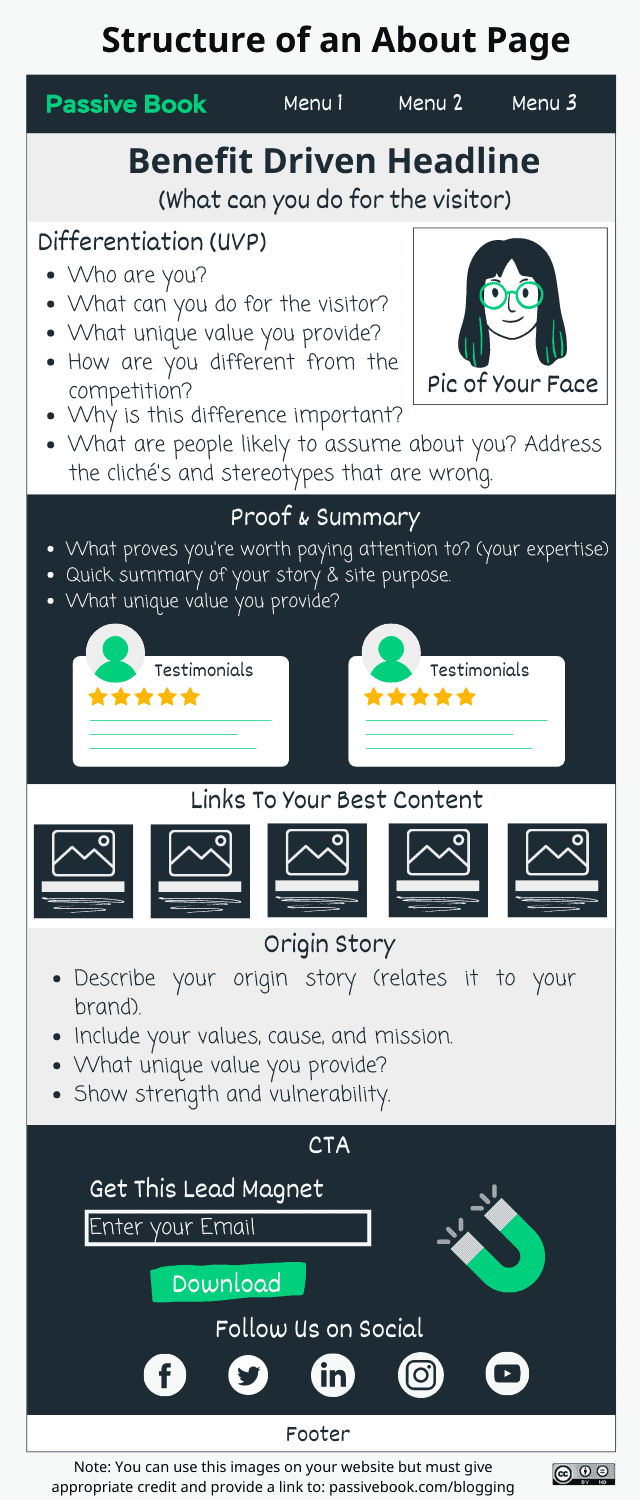
Contact Page
A contact page is a page where your visitors can contact you with any questions, feedback, or comments about your blog. You may want to include your email address and a contact form on this page so that people can easily reach out to you.
Use contact form plugins like Fluent Forms to create the form on your contact page.
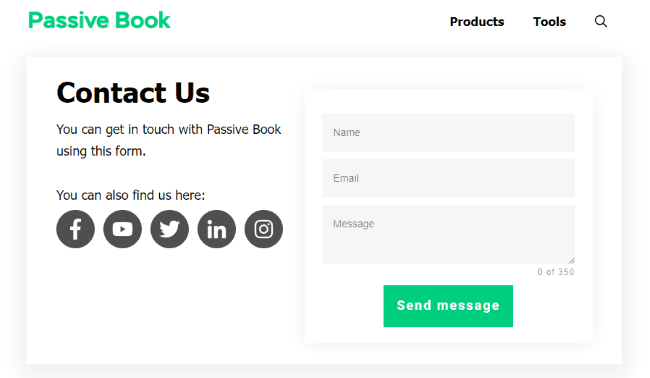
Privacy Policy
A privacy policy page is the page where you explain how you collect, use, and store the personal information of your visitors. This is a required page if you are going to be collecting any personal information from your visitors (like email addresses).
WordPress generates a privacy policy for you. But you can also use a tool like Termly to generate your own privacy policy.
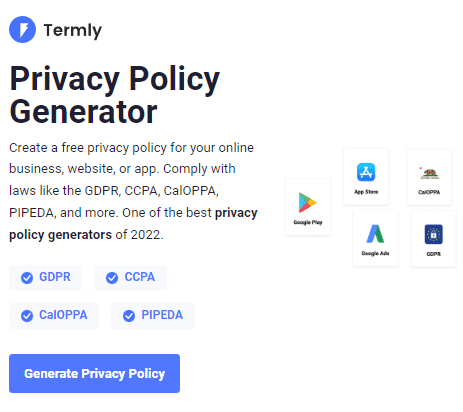
Terms of Service
A terms of service page is the page where you explain the rules and regulations that visitors must agree to when they use your website.
This is a required page if you are going to be running a membership website, online courses, or any other type of service on your website.
Use a terms & conditions generator like Termly to create it.
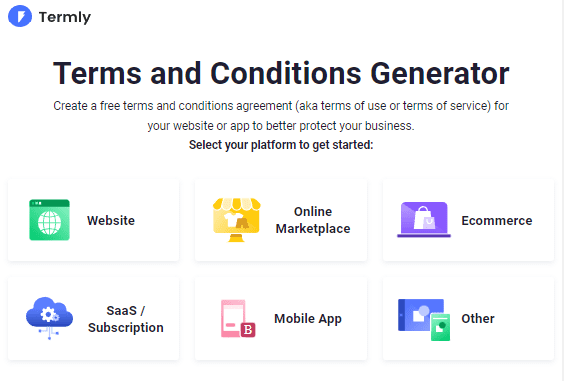
5. Write & Publish Blog Posts
Now that you have your pet blog set up, it’s time to write and publish your first blog post. To craft the perfect blog post, check out our in-depth guide on How to Write A Blog Post. Here we will go over specific tips for a pet blog.
1. Brainstorm Topics
You should brainstorm 100 topic ideas for your pet blog. This will ensure that you always have content to write about in your pet blog.
The goal is to find topics for your pet blog that your audience is searching for in Google. The type of content you write on your pet blog will depend on your specific niche.
Here are a few pet blog post ideas, you can potentially cover in your pet blog:
- Pet Care Guides
- Product Reviews
- Pet Training Guides
- Pet Food Recipes
- Pet Health
There are a few ways to brainstorm specific content:
Look at Competitors
It’s essential to be aware of what your competitors are writing about to come up with fresh, new content ideas for your own blog.
By keeping an eye on the articles your competitors are publishing, you can get a sense of the types of topics they’re covering and the angles they’re taking. This can help you come up with new, innovative content ideas that will stand out among the competition.
You can identify your competitors by googling your keyword and checking out the top results that come up.
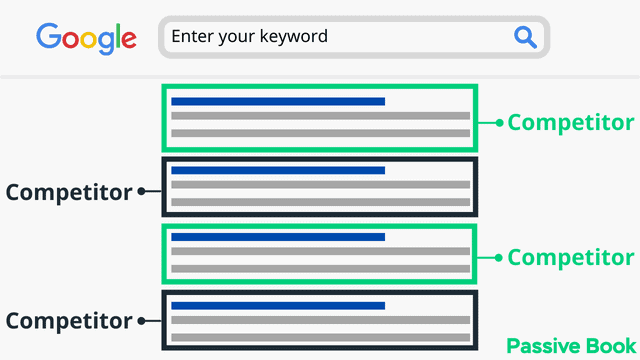
Do Keyword Research
Another great way to come up with new content ideas for your pet blog is to do keyword research. This involves using a tool like KeywordTool.io to find keywords that people are searching for in Google.
The goal is to identify keywords that your audience is interested in and write blog posts about those topics. This will help you attract more traffic to your blog from search engines.

Community & Forums
You can also look at online communities and forums where people are discussing topics related to pets. This can help you identify topics that your audience is interested in and so you can write blog posts about those topics.
You can find online communities and forums by googling keywords related to pets. You can also look at Facebook Groups and Reddit threads.
2. Create an Editorial Calendar
Once you have a list of content ideas, it’s time to create an editorial calendar for your pet blog. This is a document that outlines the topics you’re going to write about and when you’re going to publish them.
An editorial calendar should include the following information for each blog post:
- Title
- Author
- Date Published
- Topic
- Angle
Download Content Calendar Template

Steal our exclusive content calendar template. Have it delivered directly to your inbox:
Creating an editorial calendar will help you stay organized and on track with your content strategy. You can use a tool like Google Calendar or Trello to create your editorial calendar.
3. Write a Blog Post
Now it’s time to write your blog post. Check out our guide on How to a Write Blog Post for an in-depth guide on the topic. Here we will get go over some specific tips for a pet blog.
Pet Care Tips
These posts are designed to provide readers with valuable information about how to properly care for their pets. Topics can include things like feeding, grooming, exercise, and general health and wellness. By providing pet owners with information on how to care for their pets, they can ensure that their pets are happy, healthy, and well-adjusted.
Some popular pet care guide topics include:
- How to groom a cat
- The essential guide to feeding your parrot
- How to make homemade dog food
- Dog vaccination guide
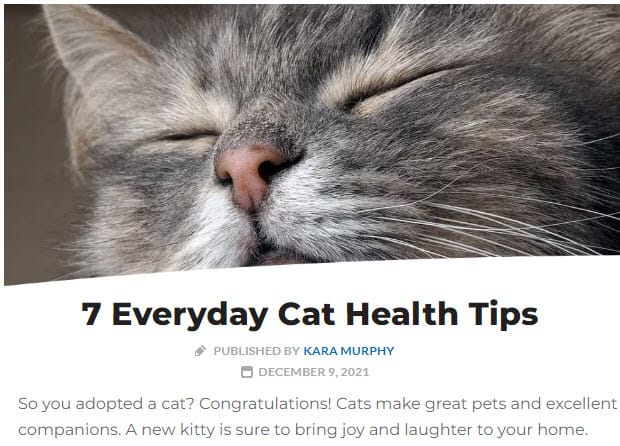
Research the topic thoroughly, provide practical and actionable advice, and use personal anecdotes or stories to make the post relatable.
Product Reviews
These posts are designed to help readers make informed decisions about the products they buy for their pets. You can review a wide range of products, including food, toys, grooming tools, and more. By providing honest, unbiased reviews of pet products, readers can make more informed decisions about what to buy for their pets.
Some popular products to review include:
- pet food
- pet toys
- pet beds
- pet crates
- grooming tools
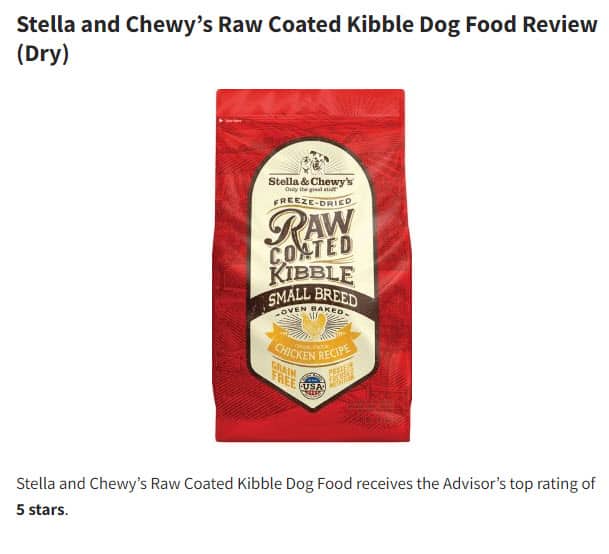
When writing a product review, it’s important, to be honest and objective. You should only review products that you’ve actually used and that you believe would be helpful for your readers.
It’s also important to include affiliate links to the products you’re reviewing in your product reviews. If someone clicks on your affiliate links and makes a purchase, you will earn a commission on the sale.
Pet Training Guides
These posts are designed to help readers train their pets effectively. They can include information on basic obedience training, problem-solving, and behavior modification. By providing readers with information on how to train their pets, they can ensure that their pets are well-behaved and well-adjusted.
Some popular topics to cover include:
- how to train a dog
- how to potty train a puppy
- how to house train your cat
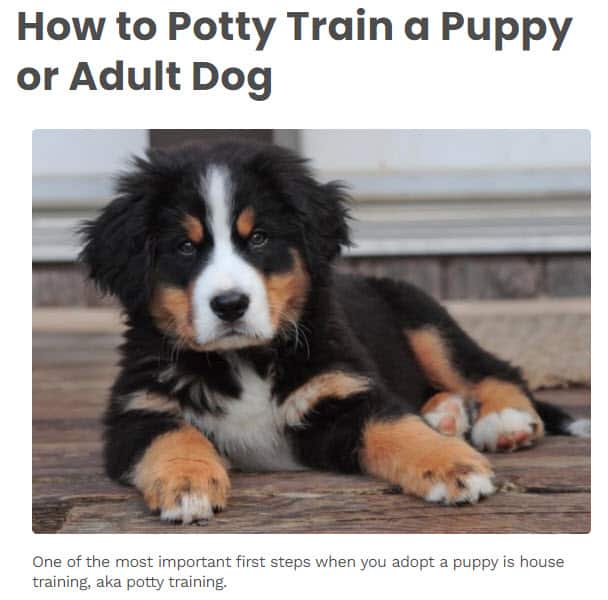
You should focus on providing advice and techniques that are easy for pet owners to implement and understand.
You can also include lots of images or videos to make the post more engaging and easier to follow. Provide practical and actionable advice, and use personal anecdotes or stories to make the post relatable.
Write 5x Faster with AI
You can write your new blog post at 5x speed using the AI writing software Jasper. I was able to write over a hundred blog articles in 3 months using Jasper. This blog article you are reading right now was written with the help of Jasper. AI will not only help you write blog posts fast but also with higher quality.
Jasper can write plagiarism-free blog content, articles, social media content, emails, and ad copy. All you have to do is provide a few inputs on what you want and Jasper will do all the hard work of creating the blog content for you. No more writer’s block.
Check out the video below to see Jasper in action:
Try Jasper for free using the links on this page and get 10,000 bonus credits you can use to start writing your first articles.
Once you sign up for Jasper I recommend you spend some time going through the tutorial videos in the Jasper Bootcamp to truly unlock the power of this amazing software.
Check out our guide on How to Write a Blog Post Fast in 15 mins Without Losing Quality for more tips to write fast.
Outsource Writing
If you’re struggling to write content for your pet blog, one option is to outsource the writing.
Several freelance writers and content agencies specialize in writing for successful pet blogs. You can find freelancer writers on Fiverr and Upwork.

The main benefit of outsourcing your blog posts is that it will free up more time for you to focus on other aspects of your blog, such as marketing and promotion.
4. Add Images
Images are an essential part of any blog post, but they’re especially important in pet blogs. This is because people love looking at pictures of animals.
You should however only use images that add value to the post. Don’t add fluff images for the sake of adding it.
One of the best things about having a pet blog is that you can share photos of your pets with the world. And the best photos are always the ones you take yourself.
When you take photos of your pets yourself, you have complete control over the composition, lighting, and framing. This means you can create photos that look professional and are more engaging for your readers.
While it’s important to use your own photos whenever possible, there will inevitably be times when you need to use stock images.
Stock images are photos that are available for purchase and use by anyone. There are several websites where you can find high-quality stock images:
Free Options: Pixabay, Pexels, Upsplash
Paid Options: Deposit Photos, Shutterstock, iStock, Getty Images, 123rf.
You can edit your photos using Canva which is a free online design tool that makes it easy to create professional-looking images. You can use Canva to add text, graphics, and effects to your photos. And you don’t need any design experience to use it.

If you upgrade to Canva Pro, you can also access a library of over 1 million stock photos, illustrations, and graphics to use in your images.
When adding images to your blog posts, you should also consider how the image will look on mobile devices. Since more people are now reading blogs on their phones as opposed to desktop computers, it’s important to optimize your images for the smaller screen. Compress your images so the file size is reduced. Use PNG for graphics and JPG for photos for the lowest file size.

6. Promote Your Pet Blog
There are many different ways to promote your blog as a pet blogger. The best promotion strategy will vary depending on your goals, audience, and resources.
Search Engine Optimization (SEO)
SEO is a process of optimizing your website so that it ranks higher in search engine results pages. This means that your website will show up higher in the results when someone searches for a term related to your blog.
There are many different techniques you can use to improve your SEO, including:
- Optimizing your blog content for keywords
- Creating backlinks to your blog from other websites
- Optimizing image file names and alt text
Many factors go into SEO, and it can be a bit confusing to figure out where to start. You can master the more advanced SEO tactics by checking out our SEO Resources.
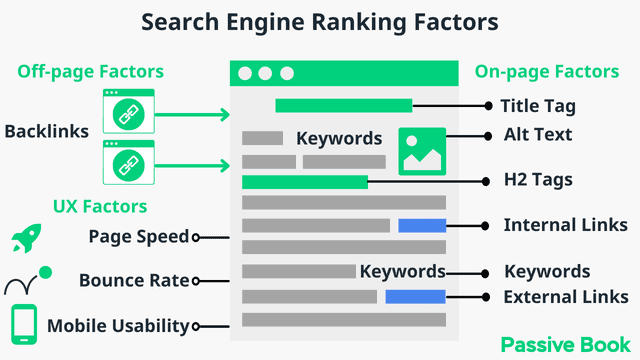
You can ensure you get the basics of SEO right, by completing the recommendations given by the RankMath plugin.
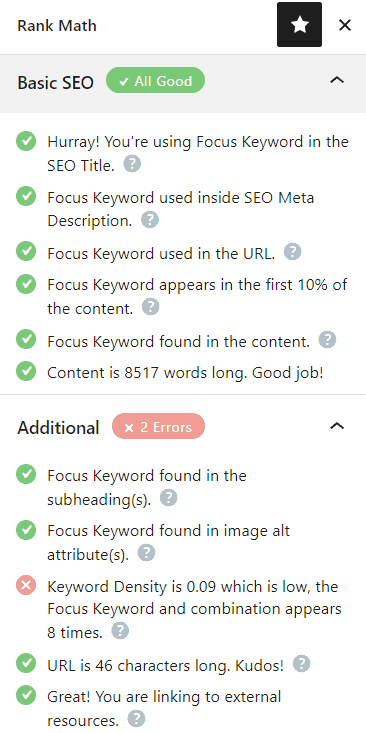
Email Marketing
Another effective way to promote your pet blog is through email marketing. This involves collecting the email addresses of your readers and sending regular emails about new blog posts, products, and services.
Email marketing is a great way to nurture your relationships with your readers and build a loyal following.
You can collect email addresses from your readers using an email signup form on your website. Then you can connect your sign-up form to an email marketing service to send emails and manage your subscriber list.

You can use the Thrive Leads plugin to build opt-in forms to collect email addresses. You can then connect the opt-in form to an email marketing service like Active Campaign to send out the emails.
Check out our Email Marketing resources to learn more.
Social Media Marketing
Social media marketing is the process of using social media platforms like Facebook, Twitter, and Instagram to promote your blog.
When used effectively, social media can be a great way to connect with your target audience, build relationships, and drive traffic to your blog.
The best way to use social media for your pet blog will vary depending on your target audience and how much time you have available.
Focus on just one of the many social media networks. Once you have mastered it, you can scale your efforts to other platforms.
Guest blogging
Another effective way to promote your pet blog is through guest blogging. This involves writing and publishing articles on other websites or blogs in your niche.
When you publish a guest post on another website, you can reach a new audience and link back to your own blog from the guest post or author bio.

You can find guest blogging opportunities by googling “keyword + guest post”
7. Monetize & Make Money
The final step to starting your own pet blog is monetization. This is how you make money from your blog.
Advertising
One of the most common ways to monetize a pet blog is through selling advertising space.
Many pet bloggers use an Ad Network to sell advertising on their websites. Ad Networks are companies that connect advertisers with websites that have available ad space. You get paid depending on the number of views and clicks you have on your ad.
To start advertising on your blog, you can sign up for an ad network like Ezoic (they pay more than Google Adsense). When your blog starts getting more than 100,000 page views a month you can monetize with Adthrive.
| Ad Network | Earnings Per 1K Impressions (EPM) | Monthly Traffic Requirement |
|---|---|---|
| Ad Thrive | $13 | 100,000 |
| Ezoic | $3 | 10,000 |
| Media.net | $1 | – |
| Google Adsense | $1 | – |
Affiliate Marketing
Another common way to monetize your pet blog is through affiliate marketing.
Affiliate marketing involves promoting products or services on your website and earning a commission when someone makes a purchase. You can promote products from an online pet store or Amazon.
There are many different affiliate programs you can join, including Amazon Associates, eBay Partner Network, and ShareASale.
To get started with affiliate marketing, sign up for an affiliate program and then add affiliate links to your blog posts.
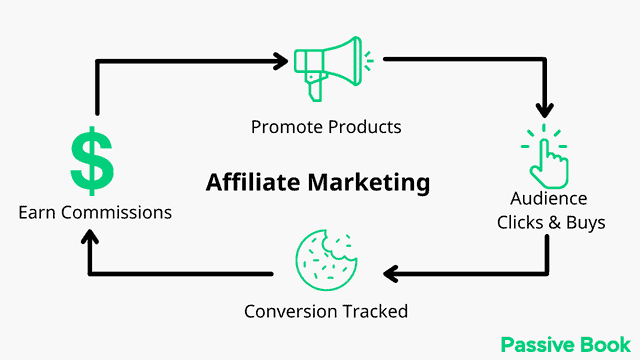
When someone clicks on one of your affiliate links and makes a purchase, you will earn a commission.
Digital Products
Another way you can make money from your pet blog is by selling digital products.
Digital products are items that are delivered electronically, like ebooks, online courses, and printables.
One of the advantages of digital products is that they have a high-profit margin because there are no production or shipping costs.
You can use Teachable if you want to sell video courses. Your students will have a dedicated course members area and a community system to ask questions and interact with each other. If you only want to sell eBooks, you can use SendOwl which lets you sell your digital products and eBooks for free.
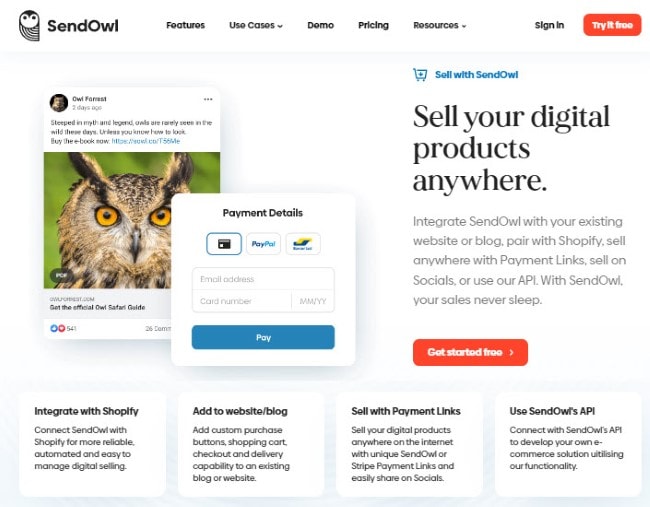
Sell Services
You can also use your pet blog to sell services, like pet sitting, and dog or cat walking. If you are a dog trainer for example you can use your pet blog to get dog owners to hire you.
When selling a service on your blog, it’s important to have an online booking system in place so that clients can easily schedule appointments with you.
You can use your blog to promote the services that you offer to your customers.
Physical Products
Pet bloggers make money by selling physical products. You can sell pet products on your blog that pet parents will be interested in buying.
This could include selling pet supplies, like pet food and toys, or pet-related apparel, like t-shirts and hats.
Sponsored Posts
Another way to make money from your pet blog is by writing sponsored posts.
Sponsored posts are articles that are written by a brand or company and published on your blog.
These articles usually promote a product or service. In exchange for publishing the article, you will receive a fee.
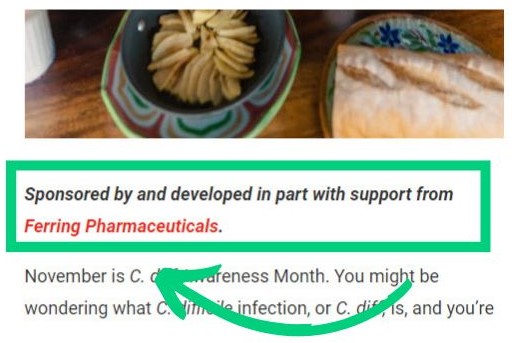
To get started with sponsored posts, pitch your blog to potential partners and negotiate the terms of your agreement.
When writing sponsored posts, it’s important to stay true to your voice and be transparent about any paid content.
FAQ
Here are a few frequently asked questions:
What do you blog about dogs?
Some dog bloggers write about their personal experiences with their own dogs, while others provide training tips and advice on topics like training, obedience, nutrition, grooming, and health.
Still, other dog bloggers focus on specific topics, like dog breeds, dog sports, and activities, or how to help dogs in need.
How can I make money with my dog?
There are many ways to make money with your dog blog, including selling advertising space, affiliate marketing programs, digital products like ebooks and online courses, and sponsored posts. Other options include selling physical products, such as toys or pet supplies, or offering services like dog walking or pet sitting. You can also use your blog to connect with potential partners and promote the services that you offer to your readers. No matter how you choose to monetize your pet blog, it’s important to stay true to your voice and be transparent about any paid content.
What Next?
Starting a pet blog is a great way to share your love of pets with the world. You can also build a community, connect with brands and make money.
We hope this guide showed you how to start a pet blog.
If you have any questions as you set up your new blog, leave a comment below so we can help you out.
Have you started your pet blog yet? What type of pet blog are you going to start? Let us know in the comments.
Share this post with your friends & followers:

Great guide for starting a pet blog! The tips on niche selection and content creation are super helpful for building a passionate and engaged audience.